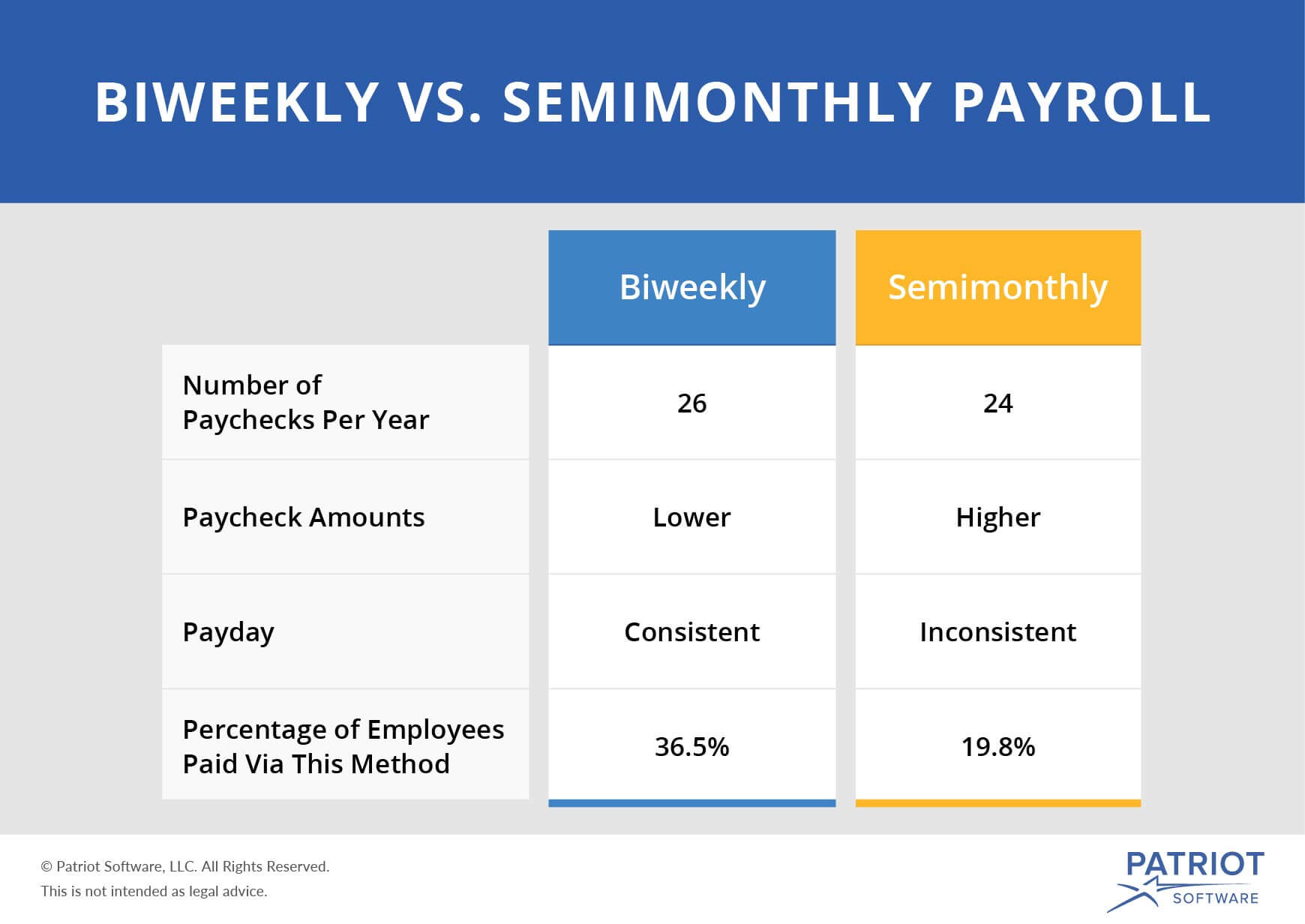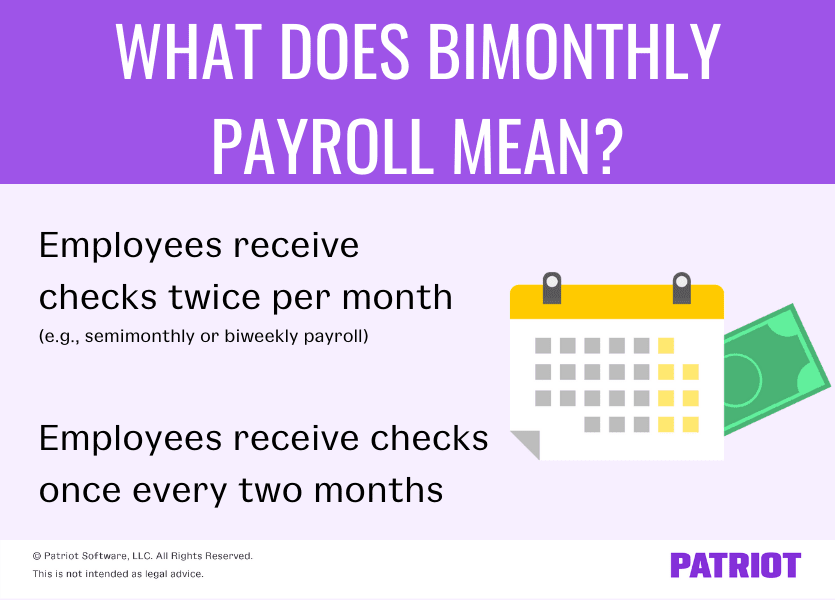Defining "bimonthly" can be a bit confusing for some people, as the term has two distinct meanings depending on the context. Whether you're discussing magazine publication schedules, billing cycles, or scientific studies, understanding the nuances of this word is essential. In this article, we will explore the term "bimonthly" in-depth, including its definitions, usage, and examples, while ensuring clarity and accuracy.
Bimonthly is a term commonly used in various industries, from publishing to finance. However, its dual meaning often leads to misunderstandings. To avoid confusion, it's crucial to examine how the term is applied in different contexts and how it can impact communication. This guide will help you understand the term fully and use it correctly in your conversations and writing.
By the end of this article, you will not only have a clear understanding of what "bimonthly" means but also learn how to distinguish between its two meanings. Let's dive into the details and uncover the nuances of this versatile term.
Read also:Mullets From The Back The Ultimate Guide To This Iconic Hairstyle
Table of Contents
- The Definition of Bimonthly
- Understanding Bimonthly in Different Contexts
- Examples of Bimonthly Usage
- The History and Etymology of Bimonthly
- Bimonthly vs. Semimonthly
- Bimonthly in Publishing
- Bimonthly in Finance
- Bimonthly in Scientific Research
- Tips for Using Bimonthly Correctly
- Conclusion
The Definition of Bimonthly
Exploring the Dual Meaning
The term "bimonthly" has two distinct meanings, which can sometimes lead to confusion. The first meaning refers to something that occurs twice a month, while the second refers to something that happens every two months. This dual definition is rooted in the prefix "bi-", which can mean "two" or "every two," depending on the context. Understanding the context in which the term is used is key to avoiding miscommunication.
Key Characteristics of Bimonthly
When using the term "bimonthly," it's important to consider the following characteristics:
- It can describe frequency (twice a month) or periodicity (every two months).
- It is often used in fields such as publishing, finance, and scientific research.
- Clarity in communication is essential to ensure the correct meaning is conveyed.
Understanding Bimonthly in Different Contexts
The context in which "bimonthly" is used plays a significant role in determining its meaning. For instance, in the publishing industry, bimonthly typically refers to publications that are released every two months. In contrast, in finance, it may refer to billing cycles that occur twice a month. Let's explore how the term is applied in various fields.
Examples of Bimonthly Usage
Real-Life Examples
Here are some examples of how "bimonthly" is used in everyday scenarios:
- A magazine that is published bimonthly releases six issues per year.
- A company may send out bimonthly invoices to its clients, resulting in 24 invoices annually.
- A scientific study conducted on a bimonthly basis collects data every two months.
Industry-Specific Examples
In specific industries, the term "bimonthly" may have slightly different connotations:
- In the publishing world, bimonthly journals are released every two months.
- In the finance sector, bimonthly payments are made twice a month.
- In healthcare, bimonthly check-ups may occur every two months.
The History and Etymology of Bimonthly
The word "bimonthly" has its roots in Latin, where "bi-" means "two" and "monthly" refers to a period of one month. Over time, the term evolved to encompass both meanings of twice a month and every two months. Its usage became more widespread in the 19th century, particularly in the burgeoning publishing industry, where magazines and journals began adopting regular publication schedules.
Read also:Cole Hamels And Heidi A Comprehensive Look At Their Lives Career And Relationship
Bimonthly vs. Semimonthly
Key Differences
It's important to distinguish between "bimonthly" and "semimonthly," as the two terms are often confused. While "bimonthly" can mean twice a month or every two months, "semimonthly" strictly refers to something that occurs twice a month. Here's a quick comparison:
- Bimonthly (twice a month): 24 occurrences per year.
- Bimonthly (every two months): 6 occurrences per year.
- Semimonthly: 24 occurrences per year.
Practical Applications
In practical terms, the distinction between bimonthly and semimonthly can have significant implications. For example, in payroll processing, semimonthly payments are made 24 times a year, while bimonthly payments (if interpreted as every two months) would result in only six payments annually. Ensuring clarity in terminology is essential to avoid errors and miscommunication.
Bimonthly in Publishing
The Role of Bimonthly Publications
In the publishing industry, bimonthly magazines and journals are a common format. These publications are released every two months, providing readers with a regular stream of content without overwhelming them with too frequent releases. This schedule allows publishers to maintain a steady flow of high-quality content while managing production costs effectively.
Advantages of Bimonthly Publishing
Some advantages of bimonthly publishing include:
- Consistent release schedule for readers.
- Adequate time for content creation and editing.
- Reduced production costs compared to monthly publications.
Bimonthly in Finance
Understanding Bimonthly Payments
In the finance sector, bimonthly payments are often used for invoicing and payroll processing. When interpreted as twice a month, bimonthly payments align with semimonthly schedules, resulting in 24 payments annually. This frequency is commonly used for employee salaries and utility bills, ensuring regular and predictable cash flow.
Financial Benefits
The benefits of bimonthly payments in finance include:
- Improved cash flow management for businesses.
- Consistent payment schedules for employees and customers.
- Reduced administrative burden compared to weekly payments.
Bimonthly in Scientific Research
Data Collection and Analysis
In scientific research, bimonthly data collection is often used to monitor long-term trends and changes. By collecting data every two months, researchers can gather sufficient information to draw meaningful conclusions without overburdening participants or resources. This approach is particularly useful in environmental studies, where seasonal variations play a significant role.
Examples in Research
Some examples of bimonthly research applications include:
- Monitoring water quality in rivers and lakes.
- Tracking wildlife populations and migration patterns.
- Studying climate change effects on ecosystems.
Tips for Using Bimonthly Correctly
Clarity in Communication
To use "bimonthly" correctly, it's essential to provide context and clarify its meaning. Here are some tips to ensure clear communication:
- Specify whether you mean twice a month or every two months.
- Use examples or provide additional information to avoid confusion.
- Consider using alternative terms, such as "every two months" or "twice monthly," if clarity is a concern.
Best Practices
Following best practices when using "bimonthly" can enhance your communication and reduce misunderstandings:
- Define the term at the outset of a discussion or document.
- Use consistent terminology throughout your writing or presentation.
- Seek feedback from colleagues or readers to ensure clarity.
Conclusion
In conclusion, the term "bimonthly" is a versatile word with two distinct meanings that can be applied in various contexts. Whether you're discussing magazine publication schedules, financial payments, or scientific research, understanding the nuances of this term is essential for effective communication. By providing clear definitions and examples, you can ensure that your audience fully comprehends the intended meaning.
We invite you to share your thoughts and experiences with "bimonthly" in the comments below. Have you encountered any challenges in using this term? How do you ensure clarity in your communication? Don't forget to explore our other articles for more insights and tips on language and communication.
For further reading, consider checking out reliable sources such as the Merriam-Webster Dictionary and the Oxford Learner's Dictionary for additional information on word usage and definitions.


